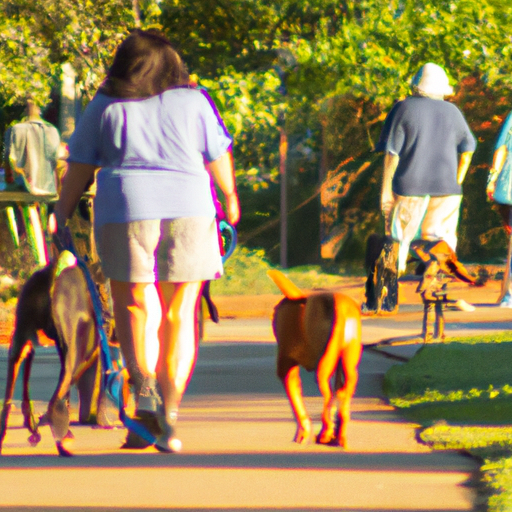Taking your dogs for a walk is much more than just a way to give them physical exercise. It’s an opportunity for your dogs to explore their environment, which is crucial for their well-being. Here, we’ll delve into the intricate aspects of walking your dogs, catering to the caregiver in you.
The Importance of Walking Your Dogs
Walking your dogs on a regular basis offers a myriad of benefits:
- Physical Health: Regular walks help maintain your dog’s healthy weight and build muscle tone.
- Mental Stimulation: Dogs get to investigate their environment, which keeps their minds sharp.
- Behavioral Improvement: Regular exercise can help control destructive behaviors such as chewing, digging, or scratching.
Preparing for the Walk
Before embarking on a walk, it’s essential to prepare appropriately:
- Choose a suitable leash and collar.
- Dress your dogs appropriately for the weather.
- Bring necessary supplies like poop bags, water, and treats.
Choosing the Right Route
The route you choose for your dogs’ walk depends on several factors:
- Dog’s Age and Fitness Level: Older or less fit dogs may require shorter, more manageable routes.
- Safety: The route should be safe and, if possible, familiar to your dogs.
- Stimulation: A good walk should provide your dogs with plenty of interesting things to sniff and explore.
Walking Etiquette
While walking your dogs, it’s important to follow certain etiquette:
- Always clean up after your dogs.
- Keep your dogs on a leash unless in a designated off-leash area.
- Respect other pedestrians and animals you encounter.
Health Checks After the Walk
After every walk, it’s good practice to perform a quick health check on your dogs:
- Check their paws for any signs of injury or irritation.
- Look for fleas or ticks, especially if you’ve walked in a wooded area.
- Ensure they drink enough water to stay hydrated.
Tools and Accessories for Dog Walking
There are several tools and accessories that can enhance your dog walking experience:
| Tool/Accessory | Use |
|---|---|
| Leash | To control and guide your dogs |
| Poop bags | To clean up after your dogs |
| Treats | To reward your dogs |
| Water bottle and bowl | To keep your dogs hydrated |
Common Challenges and Solutions
Walking your dogs can present some challenges, but they can usually be solved with patience and training:
- Pulling on the Leash: Train your dogs to walk beside you and reward them for good behavior.
- Reacting to Other Dogs: Socialize your dogs to help them feel more comfortable around others.
- Ignoring Commands: Regular training and positive reinforcement can improve your dogs’ obedience.
Frequently Asked Questions
Here are some commonly asked questions about walking your dogs:
- How long should I walk my dog? The length of the walk can vary based on your dog’s age, health, and breed. On average, a dog should have at least 30 minutes to an hour of exercise each day.
- Why does my dog pull on the leash? Dogs often pull on the leash due to excitement, a desire to chase, or lack of proper leash training.
- What should I bring on a dog walk? Essentials for a dog walk include a leash, collar, poop bags, and water. You may also want to bring treats, toys, and a first aid kit.
Walking your dogs can be a rewarding experience for you and them. It’s a time for bonding, exploration, and maintaining their health and happiness. So, take this guide, grab the leash, and enjoy the walk!



